Looking to explore the diverse flavors of Vietnam beyond Hanoi? With SIXT.VN, discover authentic regional Vietnamese cuisine in Hanoi, including Hue food and Southern specialties, making your culinary journey seamless and unforgettable.
1. Introduction: A Culinary Journey Through Vietnam in Hanoi
Can you find regional Vietnamese cuisine like Hue food and Southern dishes in Hanoi? Absolutely! Hanoi, the capital of Vietnam, is not just a city of historical landmarks and bustling streets; it’s also a culinary melting pot where you can savor the diverse flavors from all corners of the country. Thanks to establishments that bring authentic regional specialties to the capital, food enthusiasts can embark on a gastronomic journey without leaving Hanoi. SIXT.VN can assist you in planning your food tour and ensuring that you don’t miss out on any of these culinary gems. Discover local cuisine, food tours, and Vietnamese culture!
2. Why Hanoi is a Great Place to Explore Regional Vietnamese Cuisine
Hanoi is a fantastic place to explore regional Vietnamese cuisine due to its central location and cultural significance. The city attracts people from all over Vietnam, each bringing their culinary traditions with them. Over time, Hanoi has become a hub where regional dishes are not only replicated but also often enhanced and adapted to local tastes. This fusion of flavors makes Hanoi a unique destination for experiencing the breadth of Vietnamese cuisine.
3. Understanding Regional Vietnamese Cuisine
To fully appreciate the regional Vietnamese cuisine available in Hanoi, it’s important to understand the key characteristics of each region’s culinary style.
3.1. Northern Vietnamese Cuisine
Northern Vietnamese cuisine, which Hanoi is a part of, is characterized by its subtle and balanced flavors. It often features dishes that are less spicy and sweet compared to other regions. Common ingredients include freshwater fish, pork, and various fresh herbs. The use of black pepper is also prominent.
Key characteristics of Northern Vietnamese cuisine:
- Balanced Flavors: Emphasis on subtle and harmonious tastes.
- Fresh Ingredients: Use of fresh herbs, vegetables, and locally sourced meats.
- Less Spicy: Generally less spicy compared to Central and Southern cuisines.
- Examples: Phở, Bún Chả, Bún Riêu, Chả Cá Lã Vọng.
3.2. Central Vietnamese Cuisine (Especially Hue)
Central Vietnamese cuisine, particularly from the former imperial city of Hue, is known for its intricate preparation and bold flavors. Dishes from this region are often spicier and more elaborately presented than those from the North. Small, beautifully arranged dishes are a hallmark of Hue cuisine.
Key characteristics of Central Vietnamese cuisine:
- Spicy: Known for its use of chili peppers and other spices.
- Elaborate Presentation: Dishes are often beautifully arranged and visually appealing.
- Intricate Preparation: Requires skillful techniques and attention to detail.
- Examples: Bún Bò Huế, Bánh Bèo, Bánh Khoái, Cơm Hến.
3.3. Southern Vietnamese Cuisine
Southern Vietnamese cuisine is characterized by its sweetness, which comes from the liberal use of sugar and coconut milk. The fertile Mekong Delta provides an abundance of fresh fruits, vegetables, and seafood, which are all staples in Southern dishes.
Key characteristics of Southern Vietnamese cuisine:
- Sweet Flavors: The generous use of sugar and coconut milk.
- Abundant Ingredients: Fresh fruits, vegetables, and seafood are plentiful.
- Bold Flavors: A mix of sweet, sour, and spicy elements.
- Examples: Bánh Xèo, Gỏi Cuốn, Cá Kho Tộ, Hủ Tiếu Nam Vang.
4. Finding Hue Cuisine in Hanoi
Hue cuisine, with its complex flavors and royal influences, can indeed be found in Hanoi. Several restaurants specialize in bringing the authentic taste of Hue to the capital.
4.1. Popular Hue Dishes to Look For
- Bún Bò Huế: A spicy beef noodle soup that is a signature dish of Hue. It features a rich broth flavored with lemongrass, shrimp paste, and chili oil.
- Bánh Bèo: Steamed rice cakes topped with crispy pork skin, shrimp floss, and a savory fish sauce.
- Bánh Khoái: A crispy crepe similar to Bánh Xèo but smaller and thicker, filled with shrimp, pork, and bean sprouts, served with a special peanut sauce.
- Cơm Hến: Rice mixed with baby clams, crispy pork skin, peanuts, and herbs, seasoned with shrimp paste and chili.
4.2. Recommended Restaurants Serving Hue Cuisine in Hanoi
- Nhà Hàng Huế Ngon: Known for its authentic Bún Bò Huế and other Hue specialties.
- Quán Huế O Lan: A local favorite that offers a wide range of Hue dishes at reasonable prices.
- Bún Bò Huế – 47 Mai Hắc Đế: Famous for its flavorful broth and generous portions of Bún Bò Huế.
4.3. Tips for an Authentic Hue Food Experience in Hanoi
- Ask Locals: Locals can often recommend the best and most authentic Hue restaurants.
- Read Reviews: Online reviews can provide insights into the quality and authenticity of the food.
- Try Multiple Dishes: Sample a variety of dishes to get a full sense of Hue cuisine.
- Visit During Lunch or Dinner: These are peak times when the food is freshest and the atmosphere is lively.
5. Exploring Southern Vietnamese Cuisine in Hanoi
Southern Vietnamese cuisine, with its sweet and vibrant flavors, is also well-represented in Hanoi. Many restaurants offer dishes that capture the essence of Southern cooking.
5.1. Must-Try Southern Dishes
- Bánh Xèo: A crispy pancake made from rice flour, coconut milk, and turmeric, filled with shrimp, pork, and bean sprouts, served with fresh herbs and a dipping sauce.
- Gỏi Cuốn: Fresh spring rolls filled with vermicelli noodles, shrimp, pork, herbs, and lettuce, served with a peanut dipping sauce.
- Cá Kho Tộ: Braised fish in a clay pot with a sweet and savory caramel sauce.
- Hủ Tiếu Nam Vang: A noodle soup with a flavorful broth, shrimp, pork, and various toppings, influenced by Cambodian cuisine.
5.2. Top Southern Vietnamese Restaurants in Hanoi
- Quán Ăn Sài Gòn Phố Cổ: Offers a wide range of Southern dishes in a charming Old Quarter setting.
- Nhà Hàng Bánh Xèo Zon Zon: Specializes in Bánh Xèo and other Southern delicacies.
- Hủ Tiếu Cô Ba Sài Gòn: Known for its authentic Hủ Tiếu Nam Vang.
5.3. How to Spot Authentic Southern Flavors
- Sweetness: Southern dishes should have a noticeable sweetness from sugar and coconut milk.
- Fresh Herbs: A generous serving of fresh herbs is a hallmark of Southern cuisine.
- Variety of Ingredients: Southern dishes often feature a wide range of fresh vegetables, seafood, and meats.
- Bold Sauces: Look for dishes served with flavorful dipping sauces, such as nước chấm (fish sauce) or peanut sauce.
6. The Influence of Hanoi on Regional Cuisines
While Hanoi offers authentic regional dishes, the city’s culinary scene has also influenced these cuisines over time.
6.1. Adaptations and Fusions
Chefs in Hanoi sometimes adapt regional dishes to suit local tastes or to incorporate ingredients that are more readily available in the North. This can result in interesting fusions that offer a unique culinary experience.
6.2. Examples of Modified Regional Dishes in Hanoi
- Bún Bò Huế: Some Hanoi restaurants may use a slightly milder chili paste to cater to local preferences.
- Bánh Xèo: Hanoi versions might be smaller and less sweet than those found in the South.
- Cá Kho Tộ: The sweetness level may be adjusted to balance the savory flavors.
6.3. How These Changes Impact the Dining Experience
These adaptations can make regional cuisines more accessible to a wider audience but may also alter the authentic flavors that some diners seek. It’s important to be aware of these changes and to ask about the ingredients and preparation methods if you’re looking for a truly authentic experience.
7. A Guide to Herbs and Spices Used in Regional Vietnamese Cuisine
Understanding the herbs and spices used in regional Vietnamese cuisine can enhance your appreciation of the flavors and aromas.
7.1. Common Herbs and Spices
- Northern Cuisine: Dill, spring onion, coriander, ginger.
- Central Cuisine: Lemongrass, chili, turmeric, shrimp paste.
- Southern Cuisine: Thai basil, mint, cilantro, fish sauce.
7.2. Regional Variations in Herb and Spice Usage
- Dill: More commonly used in Northern dishes, such as Chả Cá Lã Vọng.
- Lemongrass and Chili: Essential in Central dishes like Bún Bò Huế.
- Thai Basil: A staple in Southern dishes, often served with Phở and Gỏi Cuốn.
7.3. How Herbs and Spices Contribute to the Unique Flavors of Each Region
The specific combination and proportion of herbs and spices used in each region contribute to the unique and distinctive flavors of their cuisine. For example, the generous use of lemongrass and chili in Central Vietnam creates bold and spicy flavors, while the abundance of fresh herbs in Southern Vietnam adds a refreshing and aromatic touch.
8. Cooking Classes: Learning to Make Regional Dishes in Hanoi
For a more immersive experience, consider taking a cooking class in Hanoi to learn how to prepare regional Vietnamese dishes.
8.1. Benefits of Taking a Cooking Class
- Hands-On Experience: Learn directly from experienced chefs.
- Understanding Ingredients: Gain knowledge about the herbs, spices, and other ingredients used in regional cuisines.
- Cultural Insight: Discover the cultural significance of the dishes you prepare.
- Fun and Engaging: Enjoy a fun and interactive way to explore Vietnamese cuisine.
8.2. Recommended Cooking Classes in Hanoi
- Hanoi Cooking Centre: Offers a variety of classes focusing on different Vietnamese cuisines.
- Old Hanoi Cooking Class: Provides a hands-on experience in preparing traditional Hanoian and regional dishes.
- Rose Kitchen Cooking Class: Known for its comprehensive classes and friendly instructors.
8.3. What to Expect in a Regional Vietnamese Cooking Class
- Market Visit: Start with a visit to a local market to learn about the ingredients.
- Preparation Techniques: Learn how to prepare and cook the dishes from scratch.
- Tasting Session: Enjoy the fruits of your labor with a delicious meal.
- Recipe Book: Receive a recipe book to recreate the dishes at home.
9. Street Food Tours: A Quick Way to Sample Regional Flavors
Street food tours are a fantastic way to sample a variety of regional flavors quickly and affordably.
9.1. Advantages of Joining a Street Food Tour
- Expert Guidance: Benefit from the knowledge of a local guide.
- Diverse Selection: Sample a wide range of dishes from different regions.
- Hidden Gems: Discover hidden culinary gems that you might not find on your own.
- Convenience: Enjoy a hassle-free way to explore Hanoi’s street food scene.
9.2. Popular Street Food Tours in Hanoi
- Hanoi Street Food Tour: Offers a comprehensive tour of the Old Quarter’s best street food stalls.
- Backstreet Academy: Provides unique culinary experiences with local families.
- Vietnam Awesome Travel: Known for its personalized and insightful food tours.
9.3. Regional Dishes Commonly Found on Street Food Tours
- Bún Chả: Grilled pork with vermicelli noodles, a Hanoian specialty.
- Phở: A classic Northern noodle soup.
- Nem Lụi: Grilled pork skewers, a Central Vietnamese dish.
- Gỏi Cuốn: Fresh spring rolls, a Southern Vietnamese favorite.
10. Seasonal Ingredients and Their Impact on Regional Cuisine
The availability of seasonal ingredients plays a significant role in shaping regional Vietnamese cuisine.
10.1. How Seasonal Ingredients Affect Dishes
- Taste and Flavor: Seasonal ingredients are often fresher and more flavorful.
- Availability: Some dishes are only available during certain times of the year.
- Regional Specialties: Seasonal ingredients can define regional culinary specialties.
10.2. Examples of Seasonal Dishes in Each Region
- Northern Vietnam (Winter): Lẩu (hot pot) dishes featuring seasonal vegetables and meats.
- Central Vietnam (Summer): Fresh seafood dishes that highlight the region’s coastal resources.
- Southern Vietnam (Rainy Season): Dishes featuring river fish and snails, which are abundant during this time.
10.3. Tips for Finding Seasonal Dishes in Hanoi
- Ask Locals: Locals can provide insights into the best seasonal dishes.
- Check Restaurant Menus: Look for dishes that feature seasonal ingredients.
- Visit Local Markets: Explore local markets to see what fresh produce is available.
- Read Food Blogs: Follow food blogs and social media accounts that highlight seasonal cuisine.
11. Drinks to Pair with Regional Vietnamese Cuisine
Pairing the right drinks with regional Vietnamese cuisine can enhance the dining experience.
11.1. Popular Vietnamese Drinks
- Trà Đá: Iced tea, a common and refreshing beverage.
- Bia Hà Nội: A local beer that pairs well with many Vietnamese dishes.
- Nước Mía: Sugar cane juice, a sweet and refreshing drink.
- Cà Phê Sữa Đá: Vietnamese iced coffee with condensed milk.
11.2. Regional Drink Pairings
- Northern Cuisine: Pair Bún Chả with Bia Hà Nội or Trà Đá.
- Central Cuisine: Enjoy Bún Bò Huế with Nước Mía to balance the spiciness.
- Southern Cuisine: Pair Bánh Xèo with Cà Phê Sữa Đá for a sweet and savory combination.
11.3. How Drinks Complement the Flavors of Each Region
The right drink can complement the flavors of each region, enhancing the overall dining experience. For example, the bitterness of Bia Hà Nội can cut through the richness of Northern dishes, while the sweetness of Nước Mía can balance the spiciness of Central cuisine.
12. Regional Desserts to Try in Hanoi
No culinary journey is complete without sampling the regional desserts.
12.1. Common Regional Desserts
- Chè: A sweet dessert soup that comes in many regional variations.
- Bánh Flan: A Vietnamese version of crème caramel.
- Tàu Hũ: Silken tofu in a sweet ginger syrup.
12.2. Regional Variations of Desserts
- Chè Huế: Hue-style Chè is often more elaborate and features a variety of ingredients, such as lotus seeds and taro.
- Chè Chuối: A Southern dessert made with bananas, coconut milk, and tapioca pearls.
- Tào Phớ: A Northern version of Tàu Hũ, often served with jasmine-infused syrup.
12.3. Where to Find Regional Desserts in Hanoi
- Local Markets: Many local markets offer a variety of regional desserts.
- Specialty Dessert Shops: Look for shops that specialize in regional Chè and other sweets.
- Street Food Stalls: Street food stalls often sell a selection of regional desserts.
13. Vietnamese Dining Etiquette: Tips for Enjoying Regional Cuisine Respectfully
Understanding Vietnamese dining etiquette can enhance your experience and show respect for the local culture.
13.1. Basic Dining Etiquette
- Use Chopsticks: Learn how to use chopsticks properly.
- Wait to Be Seated: Wait for the host to seat you.
- Serve Others First: Offer food to others before serving yourself.
- Don’t Stick Chopsticks Upright in Rice: This resembles incense offerings for the dead.
13.2. Regional Differences in Etiquette
- Northern Vietnam: More formal and reserved dining etiquette.
- Central Vietnam: Dining etiquette is influenced by royal traditions.
- Southern Vietnam: More relaxed and informal dining etiquette.
13.3. How to Show Respect When Dining in Hanoi
- Learn Basic Phrases: Learn a few basic Vietnamese phrases, such as “Xin chào” (hello) and “Cảm ơn” (thank you).
- Dress Appropriately: Dress modestly when dining out.
- Be Patient: Be patient with service, especially during busy times.
- Try Local Specialties: Show interest in trying local and regional dishes.
14. Accommodation Options with Easy Access to Regional Cuisine
Choosing the right accommodation can make it easier to explore Hanoi’s regional cuisine.
14.1. Recommended Areas to Stay
- Old Quarter: Central location with easy access to many restaurants and street food stalls.
- Hoan Kiem District: Close to historical landmarks and a variety of dining options.
- Ba Dinh District: Known for its upscale restaurants and embassies.
14.2. Hotels Near Popular Regional Restaurants
- Hanoi La Castela Hotel: Located in the Old Quarter, close to many regional restaurants.
- Hanoi Emerald Waters Hotel & Spa: Offers easy access to Hoan Kiem Lake and surrounding dining options.
- Lotte Hotel Hanoi: Situated in Ba Dinh District, near upscale dining establishments.
14.3. How to Choose Accommodation Based on Culinary Interests
- Read Reviews: Look for hotels with positive reviews about their proximity to restaurants and street food stalls.
- Check Location: Choose a hotel in an area known for its culinary offerings.
- Ask for Recommendations: Ask the hotel staff for recommendations on regional restaurants.
- Consider Amenities: Look for hotels with amenities such as on-site restaurants or cooking classes.
15. Transportation Tips for Exploring Hanoi’s Regional Cuisine
Getting around Hanoi efficiently is essential for exploring its diverse culinary scene.
15.1. Popular Transportation Options
- Taxis: Readily available and a convenient option for getting around the city.
- Motorbike Taxis (Xe Ôm): A quick and affordable way to navigate the city.
- Ride-Hailing Apps (Grab, Gojek): Offer a convenient and reliable transportation option.
- Buses: An affordable but sometimes crowded option.
15.2. Tips for Navigating Hanoi
- Use Ride-Hailing Apps: These apps can help you avoid scams and ensure fair pricing.
- Learn Basic Directions: Familiarize yourself with basic directions and landmarks.
- Carry a Map: Carry a map or use a GPS app to navigate the city.
- Be Aware of Traffic: Hanoi’s traffic can be chaotic, so be cautious when crossing streets.
15.3. Getting to Regional Restaurants Using Public Transport
- Plan Your Route: Use Google Maps or other navigation apps to plan your route.
- Check Bus Schedules: Check bus schedules and routes in advance.
- Allow Extra Time: Allow extra time for travel, as traffic can be unpredictable.
- Ask for Help: Don’t hesitate to ask locals for directions.
16. Budgeting for a Regional Food Tour in Hanoi
Planning your budget is crucial for a successful and enjoyable food tour in Hanoi.
16.1. Average Costs of Meals in Hanoi
- Street Food: $1 – $3 per dish
- Local Restaurants: $5 – $10 per meal
- Upscale Restaurants: $15 – $30 per meal
16.2. Tips for Saving Money on Food
- Eat at Local Stalls: Street food stalls offer affordable and delicious options.
- Avoid Tourist Traps: Steer clear of restaurants that cater primarily to tourists, as they tend to be more expensive.
- Try Lunch Specials: Many restaurants offer lunch specials at discounted prices.
- Share Dishes: Share dishes with your travel companions to sample a wider variety of foods without breaking the bank.
16.3. Creating a Realistic Food Budget
- Set a Daily Budget: Determine how much you can afford to spend on food each day.
- Prioritize Experiences: Allocate more of your budget to unique culinary experiences, such as cooking classes or street food tours.
- Track Your Spending: Keep track of your spending to ensure that you stay within your budget.
- Be Flexible: Be prepared to adjust your budget as needed, based on your actual spending.
17. Safety Tips for Eating Street Food in Hanoi
Eating street food is a must-do in Hanoi, but it’s important to take precautions to ensure your safety.
17.1. How to Identify Safe Street Food Stalls
- Look for Crowds: Stalls that are popular with locals are often a good sign.
- Check for Cleanliness: Observe the cleanliness of the stall and the food preparation area.
- Ensure Freshly Cooked Food: Choose stalls that cook food to order.
- Avoid Stalls with Stagnant Water: Avoid stalls with stagnant water or poor drainage.
17.2. Precautions to Take Before Eating
- Wash Your Hands: Wash your hands thoroughly before eating.
- Use Hand Sanitizer: Carry and use hand sanitizer.
- Avoid Raw Vegetables: Be cautious about eating raw vegetables, as they may not be properly washed.
- Drink Bottled Water: Stick to bottled water to avoid waterborne illnesses.
17.3. What to Do If You Get Sick
- Stay Hydrated: Drink plenty of fluids.
- Rest: Get plenty of rest.
- Seek Medical Attention: If your symptoms are severe, seek medical attention.
- Carry Medications: Carry any necessary medications with you.
18. Cultural Immersion Activities Beyond Food
Enhance your trip to Hanoi with cultural immersion activities beyond food.
18.1. Popular Cultural Activities
- Visiting Historical Sites: Explore historical sites such as the Ho Chi Minh Mausoleum, the Temple of Literature, and the Hoa Lo Prison.
- Attending Water Puppet Shows: Watch a traditional water puppet show.
- Exploring Local Markets: Visit local markets such as Dong Xuan Market and Hang Be Market.
- Taking a Cyclo Tour: Take a cyclo tour of the Old Quarter.
18.2. How These Activities Complement the Food Experience
These activities can provide a deeper understanding of Vietnamese culture and history, which can enhance your appreciation of the regional cuisine.
18.3. Tips for a Meaningful Cultural Experience
- Learn About the History: Learn about the history and significance of the sites you visit.
- Interact with Locals: Engage with locals and learn about their daily lives.
- Respect Local Customs: Be respectful of local customs and traditions.
- Participate in Local Events: Participate in local events and festivals.
19. Using SIXT.VN to Plan Your Culinary Trip to Hanoi
SIXT.VN offers a range of services that can help you plan your culinary trip to Hanoi, ensuring a seamless and enjoyable experience.
19.1. Services Offered by SIXT.VN
- Airport Transfer: Arrange for convenient and reliable airport transfer services.
- Hotel Booking: Book accommodations that suit your budget and preferences.
- Tour Packages: Choose from a variety of tour packages that focus on regional cuisine and cultural experiences.
- Car Rental: Rent a car for exploring Hanoi and its surrounding areas.
19.2. How SIXT.VN Can Simplify Your Travel Planning
SIXT.VN can simplify your travel planning by providing a one-stop-shop for all your travel needs, from transportation and accommodation to tours and activities.
19.3. Example Itinerary Using SIXT.VN Services
Day 1:
- Arrive at Noi Bai International Airport and use SIXT.VN’s airport transfer service to your hotel in the Old Quarter.
- Check into your hotel booked through SIXT.VN.
- Take a street food tour to sample regional flavors.
Day 2:
- Visit historical sites such as the Ho Chi Minh Mausoleum and the Temple of Literature.
- Enjoy a cooking class focusing on regional Vietnamese cuisine.
- Dine at a recommended Hue restaurant.
Day 3:
- Explore local markets such as Dong Xuan Market and Hang Be Market.
- Take a cyclo tour of the Old Quarter.
- Depart from Noi Bai International Airport using SIXT.VN’s airport transfer service.
20. Conclusion: Embarking on a Regional Culinary Adventure in Hanoi with SIXT.VN
Exploring regional Vietnamese cuisine in Hanoi offers a unique and rewarding culinary adventure. With SIXT.VN, you can easily plan and execute your trip, ensuring a seamless and unforgettable experience. From savoring authentic Hue dishes to indulging in the sweet flavors of Southern cuisine, Hanoi provides a diverse and vibrant culinary landscape that is sure to delight any food enthusiast.
Ready to explore the tastes of Vietnam in Hanoi? Let SIXT.VN take care of your travel needs. Book your airport transfer, hotel, and culinary tours today and embark on a gastronomic adventure that will tantalize your taste buds and enrich your understanding of Vietnamese culture. Visit SIXT.VN now to start planning your trip!
FAQ: Discovering Regional Vietnamese Cuisine in Hanoi
21.1. Is it possible to find authentic regional Vietnamese cuisine in Hanoi?
Yes, it is possible to find authentic regional Vietnamese cuisine in Hanoi. Many restaurants specialize in bringing the flavors of different regions, such as Hue and Southern Vietnam, to the capital.
21.2. What are some popular Hue dishes to try in Hanoi?
Popular Hue dishes to try in Hanoi include Bún Bò Huế (spicy beef noodle soup), Bánh Bèo (steamed rice cakes), Bánh Khoái (crispy crepe), and Cơm Hến (rice mixed with baby clams).
21.3. Where can I find Southern Vietnamese cuisine in Hanoi?
You can find Southern Vietnamese cuisine at restaurants like Quán Ăn Sài Gòn Phố Cổ, Nhà Hàng Bánh Xèo Zon Zon, and Hủ Tiếu Cô Ba Sài Gòn.
21.4. How can I ensure the street food I eat in Hanoi is safe?
To ensure the street food you eat in Hanoi is safe, look for stalls that are popular with locals, check for cleanliness, ensure the food is freshly cooked, and avoid stalls with stagnant water.
21.5. What are some essential herbs and spices used in regional Vietnamese cuisine?
Essential herbs and spices include dill (Northern), lemongrass and chili (Central), and Thai basil (Southern).
21.6. Can SIXT.VN help me plan my culinary trip to Hanoi?
Yes, SIXT.VN offers services such as airport transfers, hotel booking, tour packages, and car rental to help you plan your culinary trip to Hanoi.
21.7. What are some cultural activities I can enjoy in Hanoi besides food?
Cultural activities include visiting historical sites, attending water puppet shows, exploring local markets, and taking a cyclo tour.
21.8. How can I save money on food while in Hanoi?
To save money on food, eat at local stalls, avoid tourist traps, try lunch specials, and share dishes with your travel companions.
21.9. What is Vietnamese dining etiquette I should be aware of?
Be aware of using chopsticks properly, waiting to be seated, serving others first, and not sticking chopsticks upright in rice.
21.10. What are some popular drinks to pair with regional Vietnamese cuisine?
Popular drinks include Trà Đá (iced tea), Bia Hà Nội (local beer), Nước Mía (sugar cane juice), and Cà Phê Sữa Đá (Vietnamese iced coffee with condensed milk).
 Fresh herbs & spices in Vietnamese Food
Fresh herbs & spices in Vietnamese Food
Fresh spring onions growing in a Saigon garden, highlighting the importance of local produce in Vietnamese cooking.
Lush coriander growing in a garden, illustrating the herb’s popularity as a garnish and flavor enhancer in Vietnamese dishes.
Garlic chives cultivated in a Saigon garden, showcasing their use as both a vegetable and herb in Southern Vietnamese cuisine.
 Dill, Vietnam
Dill, Vietnam
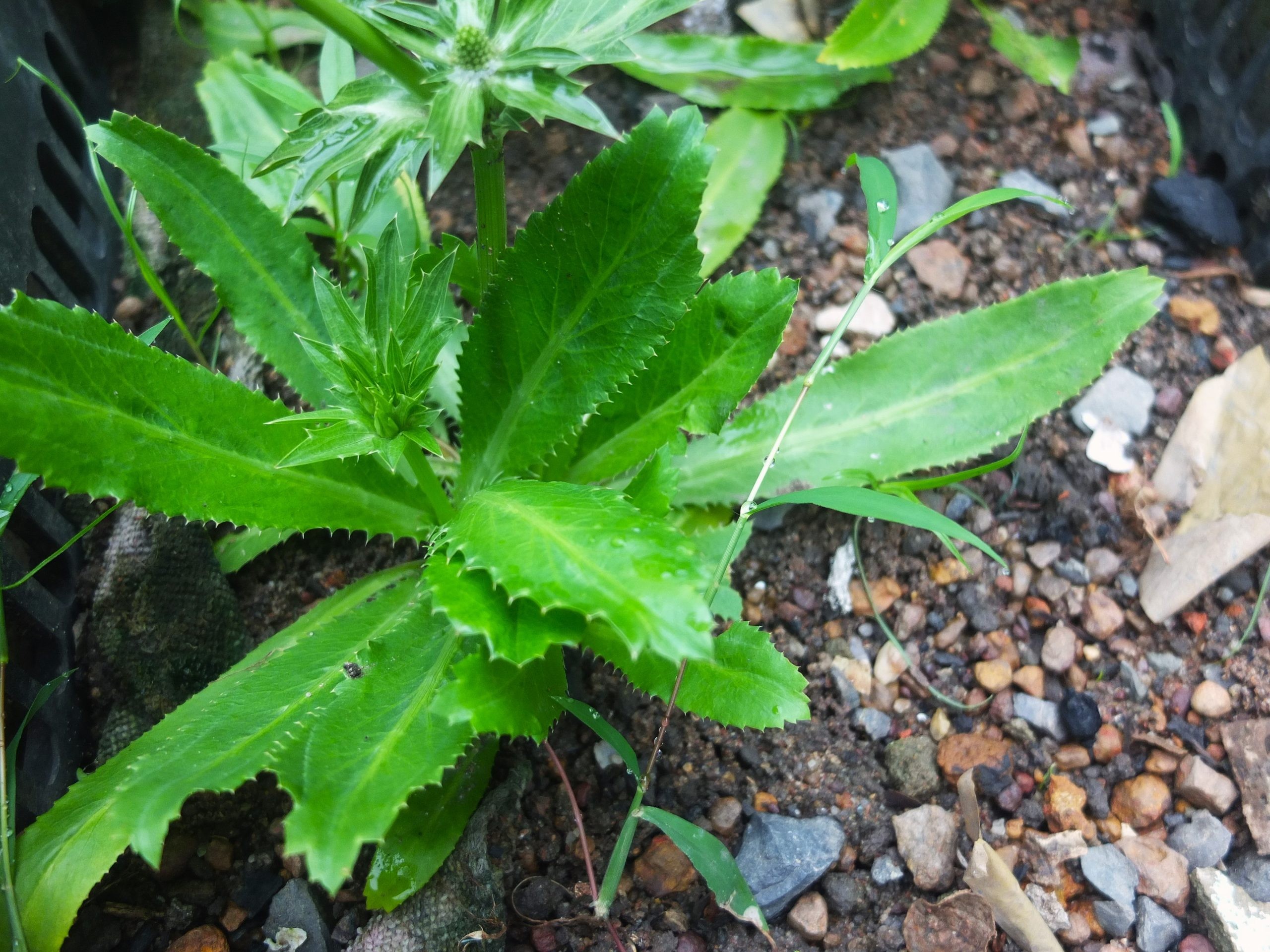 Culantro, Vietnam
Culantro, Vietnam
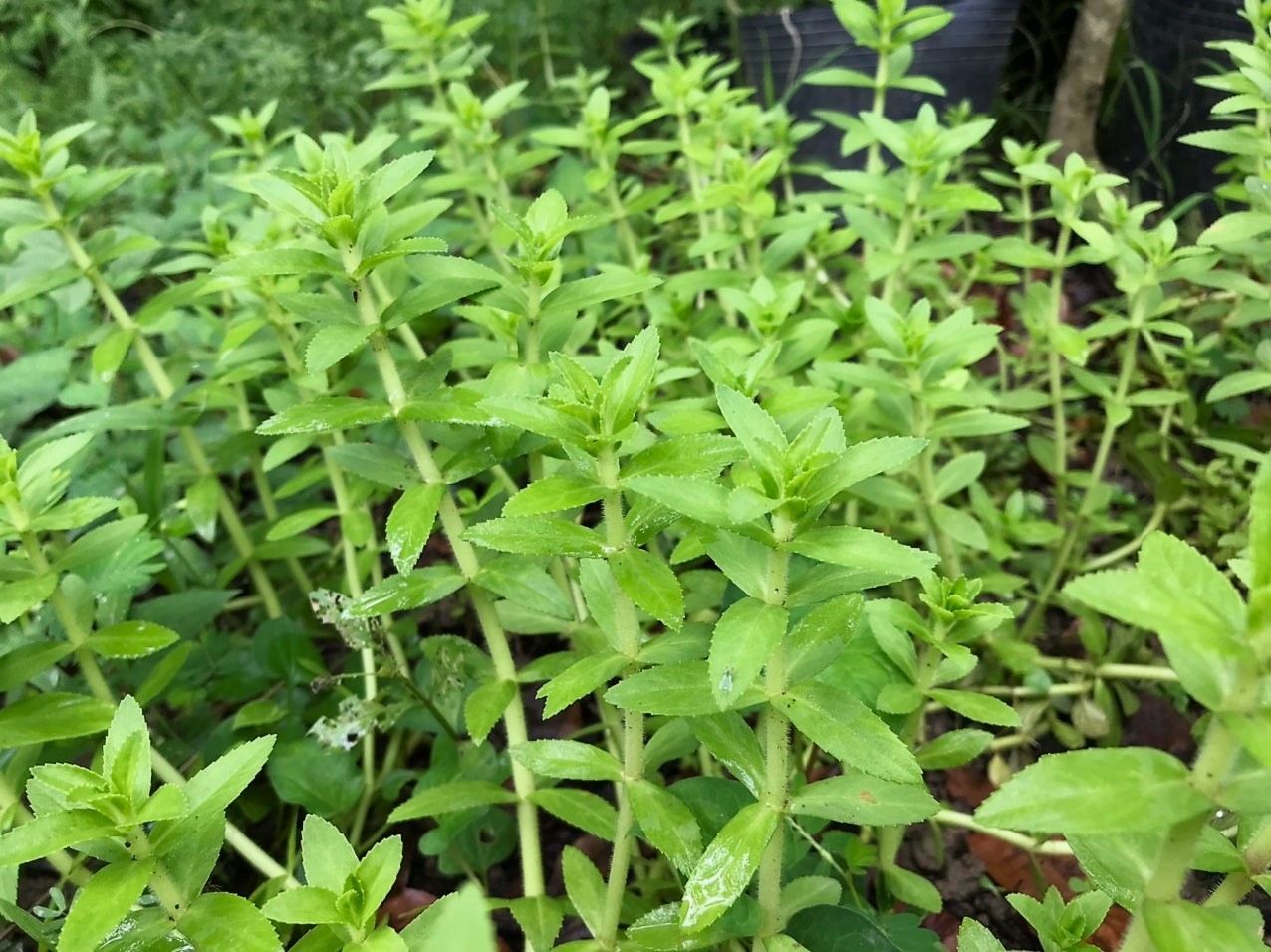 Rice paddy herb, Vietnam
Rice paddy herb, Vietnam
Vietnamese coriander growing in a Bien Hoa garden, emphasizing its role in balancing the yin and yang in Vietnamese cuisine.
Aromatic Thai basil growing in a Saigon garden, illustrating its importance in Southern Vietnamese dishes like Pho and bun bo Hue.
Vibrant Perilla leaves flourish in a Saigon garden, highlighting their versatility in fresh spring rolls and herbal remedies.
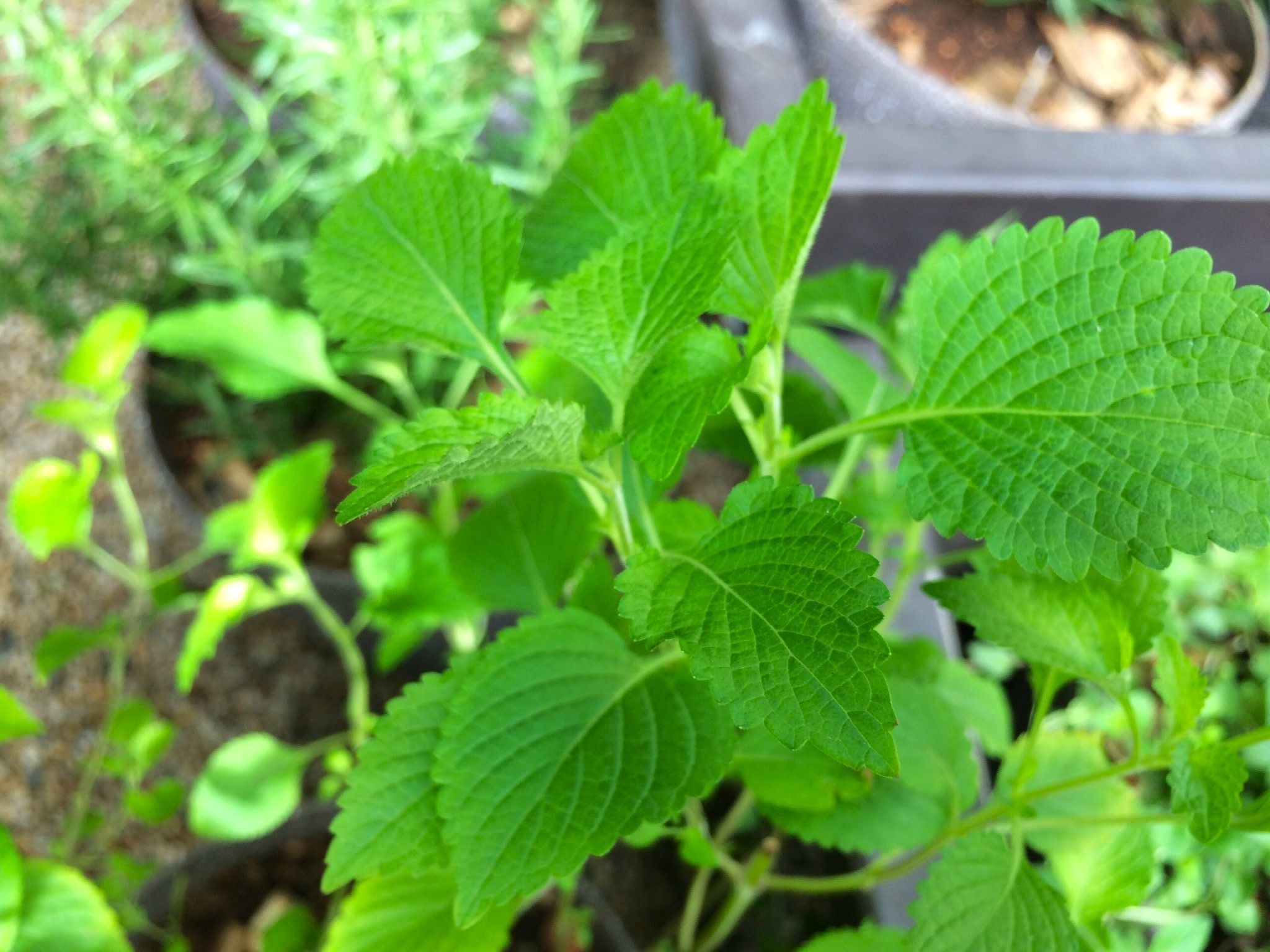 Vietnamese balm
Vietnamese balm
Aromatic wild mint thrives in a Saigon garden, enhancing the flavor of pho, bo kho, and banh xeo in Southern Vietnam.
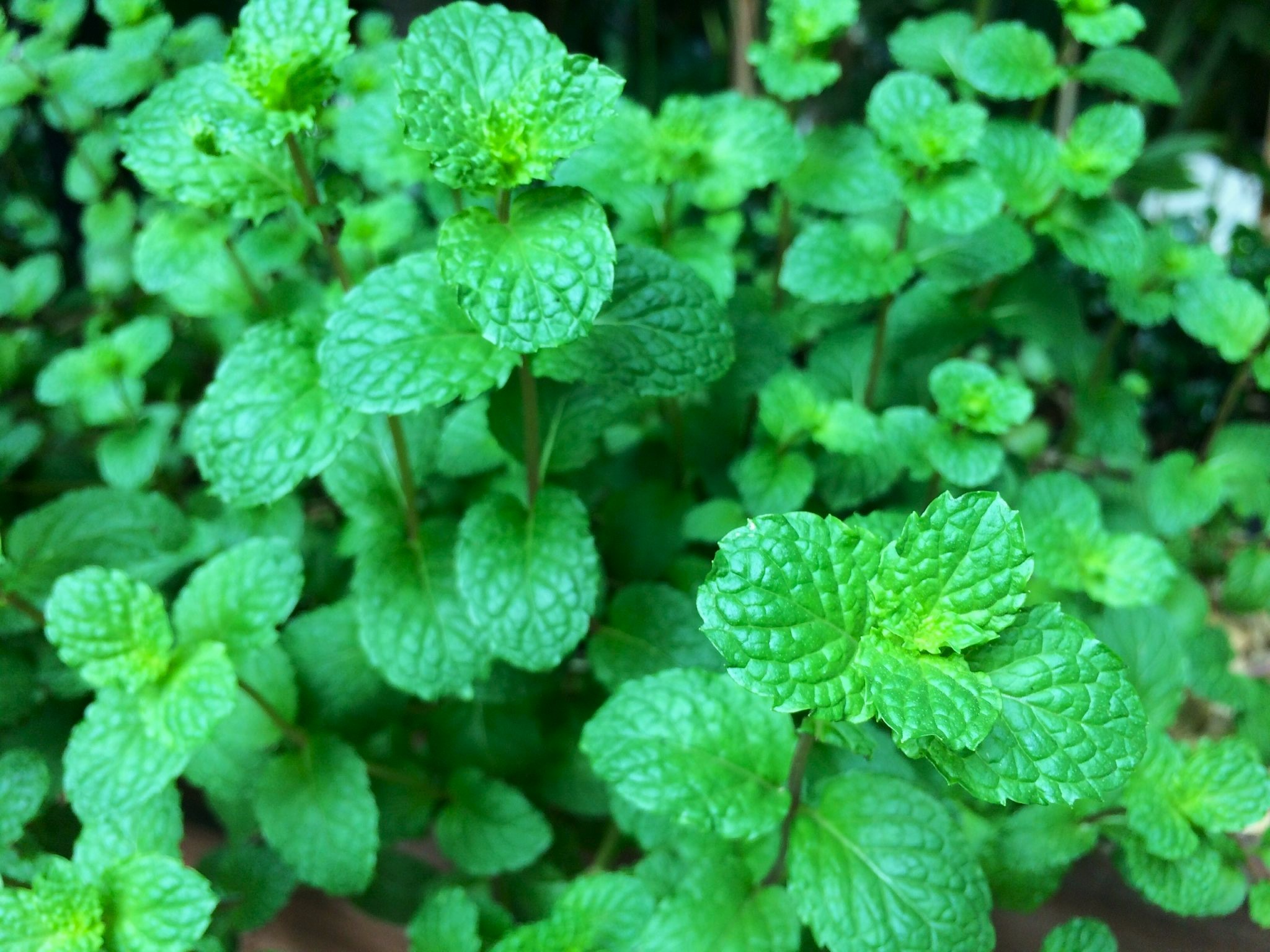 Mojito mint, Vietnam
Mojito mint, Vietnam
Healthy fish mint flourishes in a Saigon garden, often paired with banh xeo and nuoc ca kho for its unique flavor.
 Garlic cloves, Vietnam
Garlic cloves, Vietnam
Toasted shallots beautifully garnish steamed rice rolls, enhancing texture and flavor.
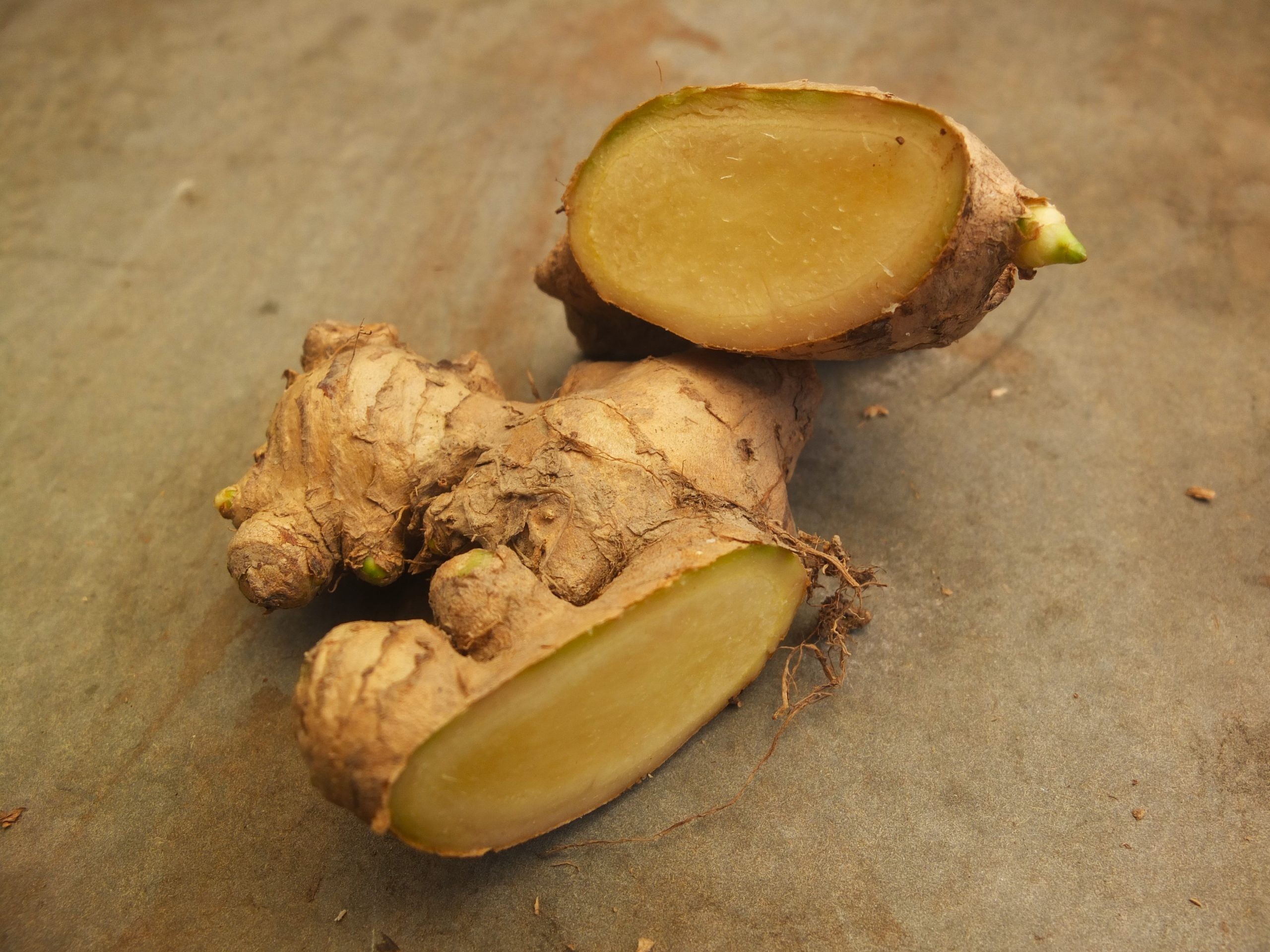 Ginger, Vietnam
Ginger, Vietnam
Fresh turmeric adds vibrant color and flavor to Central Vietnamese dishes like ca kho nghe and lòng xào nghệ.
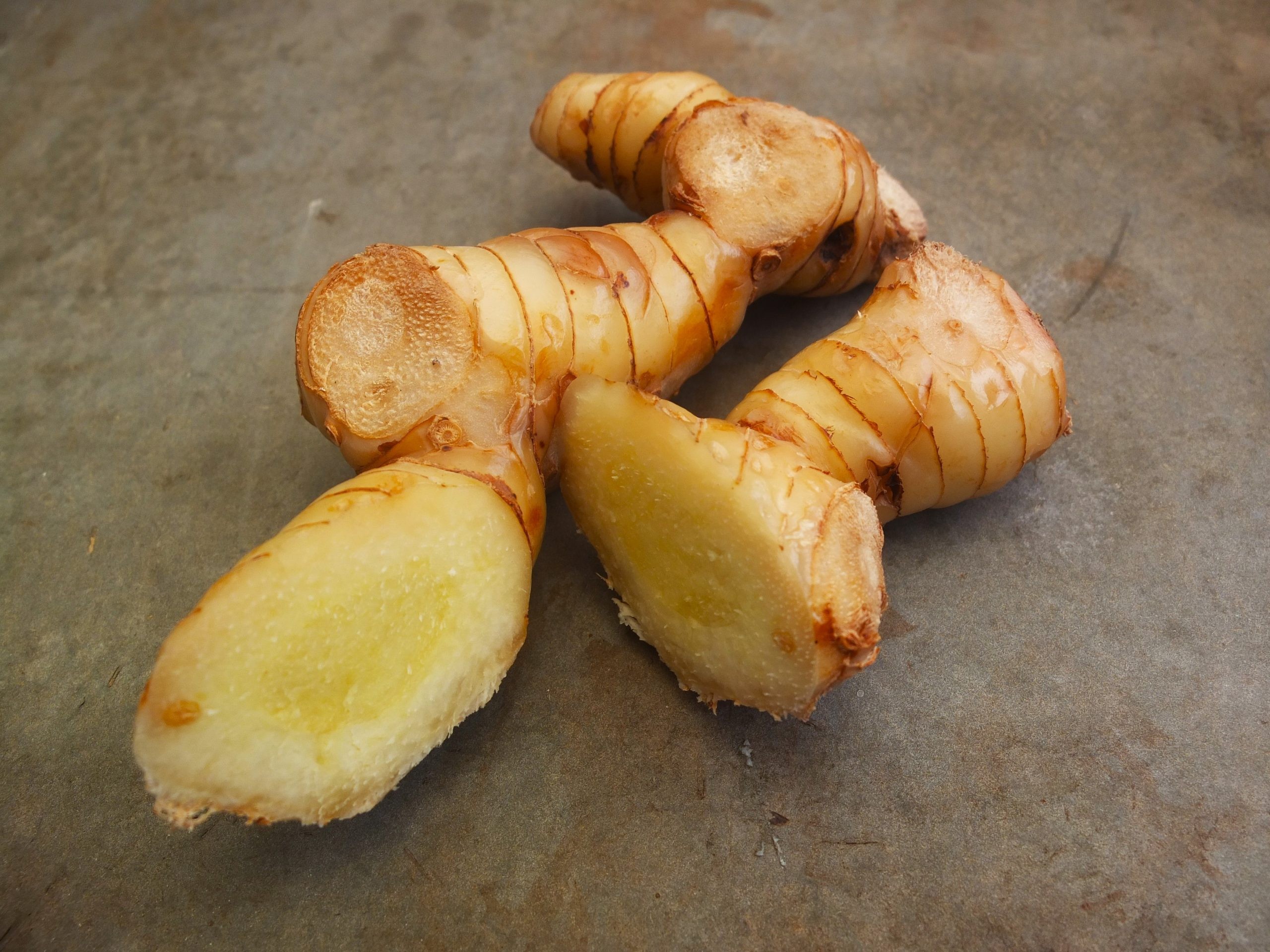 Galangal, Vietnam
Galangal, Vietnam
Fragrant lemongrass grows abundantly, essential for elevating dishes like gà kho sả ớt and bún bò Huế.
Vibrant chillies are a staple in Vietnamese cooking, adding heat and depth to dishes across regions.



